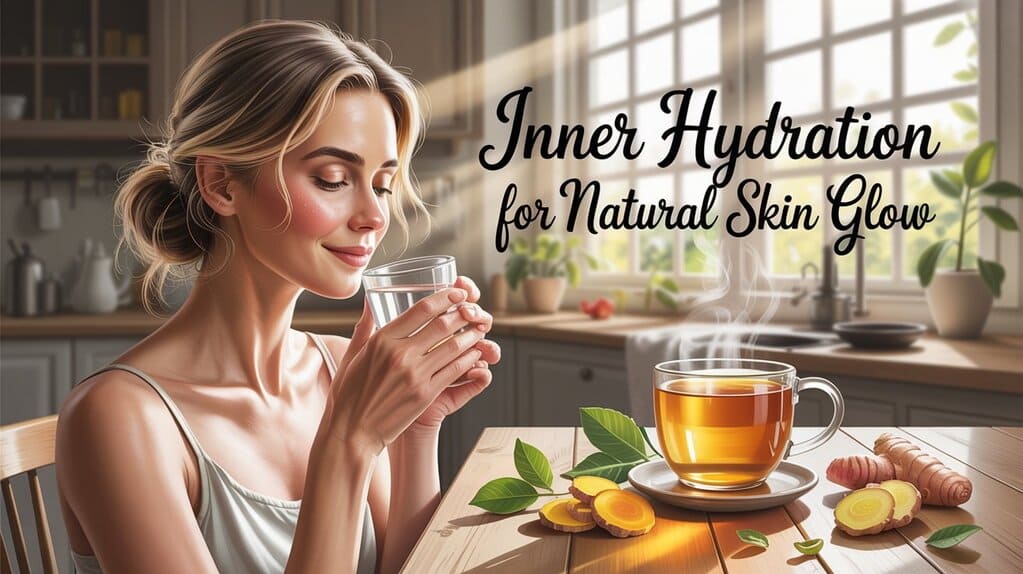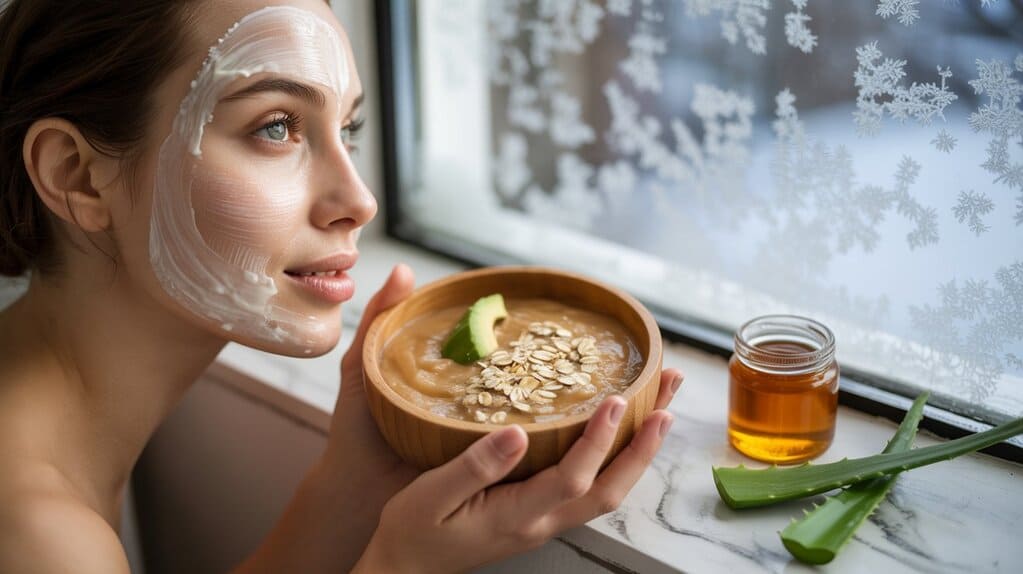
Introduction
Bright orange vegetables like carrots and sweet potatoes are more than colorful lunchbox fillers — they are rich sources of beta-carotene, a plant provitamin A that the body converts into vitamin A. For school-age children and adolescents, adequate vitamin A availability supports vision (especially low-light vision), healthy skin and mucous membranes, and immune defenses that keep students in class rather than home sick. This article explains, in clear and SEO-friendly language, how dietary beta-carotene from carrots and sweet potatoes supports eye health and skin health, why these foods are ideal for classroom nutrition programs, and what recent scientific evidence from Asia, Europe and North America says about benefits and safety. Main points, an easy reference table, clinical study highlights, and a curated list of references are included for teachers, parents, and school nutrition planners.
Main points
- Beta-carotene in carrots and sweet potatoes is a major dietary source of vitamin A (provitamin A), required for the visual cycle and maintenance of healthy skin and mucous membranes. Wikipédia+1
- Regular consumption of carrot and sweet potato preparations improves skin carotenoid levels, contributes to a healthy skin tone, and can provide systemic photoprotective effects against UV-induced skin damage. PMC+1
- For eye health, beta-carotene prevents deficiency-related night blindness and contributes to overall retinal health; however, for age-related macular degeneration (AMD) management, lutein/zeaxanthin have stronger evidence in older adults than beta-carotene. Supplements containing high-dose beta-carotene carry specific risks for smokers. CENIBio+1
- In the classroom context, whole-food sources (carrots, sweet potatoes) provide fiber, other carotenoids, and nutrients that improve absorption when eaten with a little healthy fat (e.g., olive oil, yogurt). Wikipédia
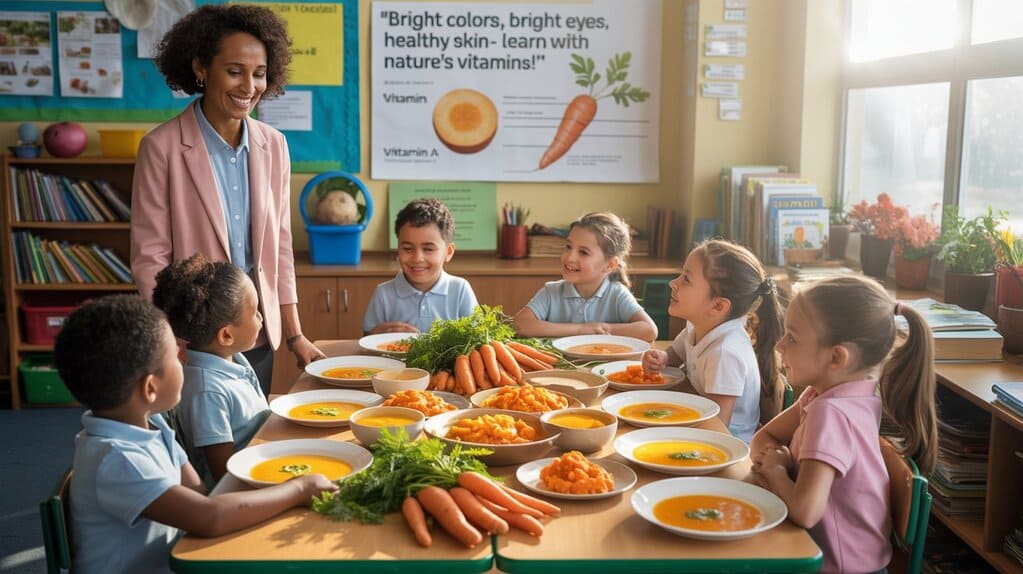
The science : How beta-carotene works for skin and vision
Conversion to Vitamin A and vision
Beta-carotene is a carotenoid that acts as a provitamin A — in the intestinal mucosa it can be enzymatically cleaved to form retinal and retinoic acid, active forms of vitamin A required for the visual cycle (rhodopsin regeneration in rods) and normal dark adaptation. Vitamin A deficiency causes night blindness and increases susceptibility to ocular surface disease; therefore, regular dietary intake of beta-carotene-rich foods helps maintain healthy vision in growing children. Authoritative reviews and clinical overviews (NIH Office of Dietary Supplements, StatPearls) summarize these biochemical roles and clinical consequences of deficiency. Bureau des Suppléments Alimentaires+1
Skin : carotenoids as antioxidants and photoprotectants
Carotenoids, including beta-carotene, are lipid-soluble antioxidants that accumulate in the skin and can reduce UV-induced erythema and oxidative damage. Clinical trials and systematic reviews report that sustained intake of beta-carotene (from foods or supplements) can increase skin carotenoid levels and, over weeks to months, confer measurable reductions in UV erythema and improvements in some markers of skin aging (wrinkle depth, elasticity) in adults. Recent systematic reviews (2023–2025) summarize human and animal evidence pointing to useful photoprotective and skin health effects of carotenoids found in carrots and sweet potatoes. PMC+1
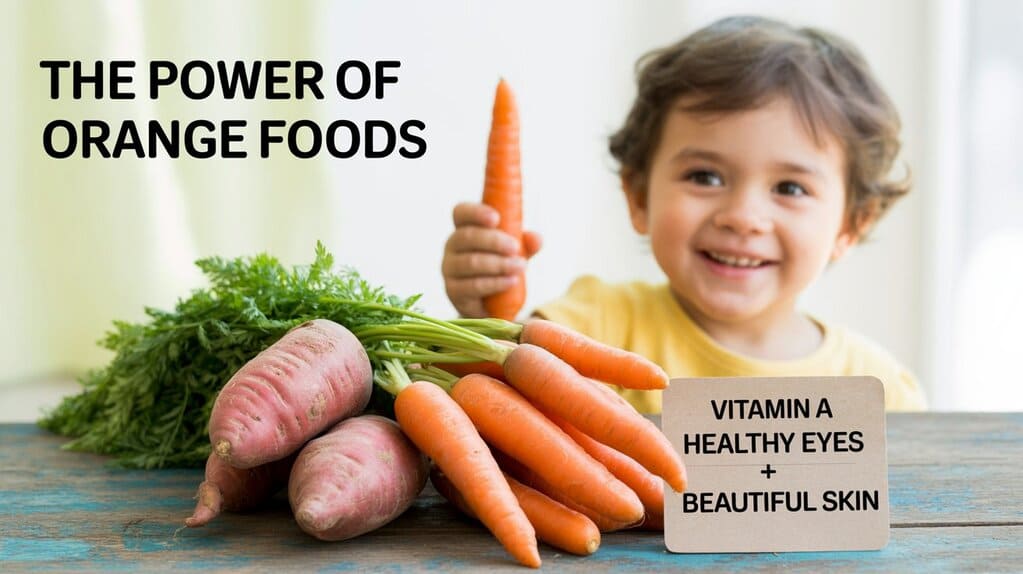
Practical classroom nutrition : serving ideas and absorption tips
- Serve cooked carrots or mashed sweet potatoes rather than raw alone: cooking helps release carotenoids from plant matrices and improves absorption. Wikipédia
- Pair with a small amount of healthy fat (olive oil, avocado, nut butter) to increase carotenoid uptake (beta-carotene is fat-soluble). Wikipédia
- Offer variety: orange roots (carrot, sweet potato, pumpkin) plus green leafy vegetables deliver a spectrum of carotenoids (beta-carotene, lutein, zeaxanthin). This mix benefits both skin and macular pigment for long-term eye health. PMC+1
Table — Nutrient comparison per 100 g (selected values)**
(Use as classroom handout; values adapted from nutrient databases and summaries.)
| Food (100 g) | Approx. β-carotene (mg) | Other notable nutrients |
|---|---|---|
| Raw carrot | ~9.2 mg (carrot juice similar) | Fiber, vitamin K, potassium. Wikipédia |
| Boiled, skinned sweet potato | ~9.4 mg | Vitamin C, potassium, complex carbs. Wikipédia |
| Spinach (cooked) | 8–9 mg (masked by chlorophyll) | Lutein/zeaxanthin, iron. Wikipédia |
Note: mg values above are approximate and represent typical food-composition figures; cooking method and cultivar cause variability. See references below for primary nutrient tables. Wikipédia
Evidence from recent studies — Asia, Europe, North America
- Skin photoprotection & appearance (Europe) — Controlled human trials and recent systematic reviews published in European dermatology and nutrition journals document that dietary carotenoids (including beta-carotene from orange vegetables) can reduce UV-induced erythema and support skin structure markers (collagen mRNA, reduced MMP expression). These effects were observed after weeks to months of consistent intake. PMC+1
- Vitamin A status & public health interventions (Africa/Asia/Worldwide) — Food-based approaches using provitamin A carotenoid-rich staples (orange sweet potato, orange maize, carrots) are effective strategies to improve vitamin A status in children and women in low-resource settings; systematic reviews and program evaluations (WHO/UNICEF-aligned literature) have shown measurable benefits in reducing deficiency and night blindness prevalence where diets are otherwise poor in preformed vitamin A. ScienceDirect+1
- Eye disease prevention (North America/Europe) — Large clinical trials on age-related macular degeneration (AREDS/AREDS2) found that lutein and zeaxanthin, not beta-carotene, are preferable in supplement formulations for older adults at risk of progression to late AMD; beta-carotene can be substituted due to safety concerns (especially in smokers). This does not negate the role of dietary beta-carotene in preventing deficiency-related visual problems in children. PMC+1
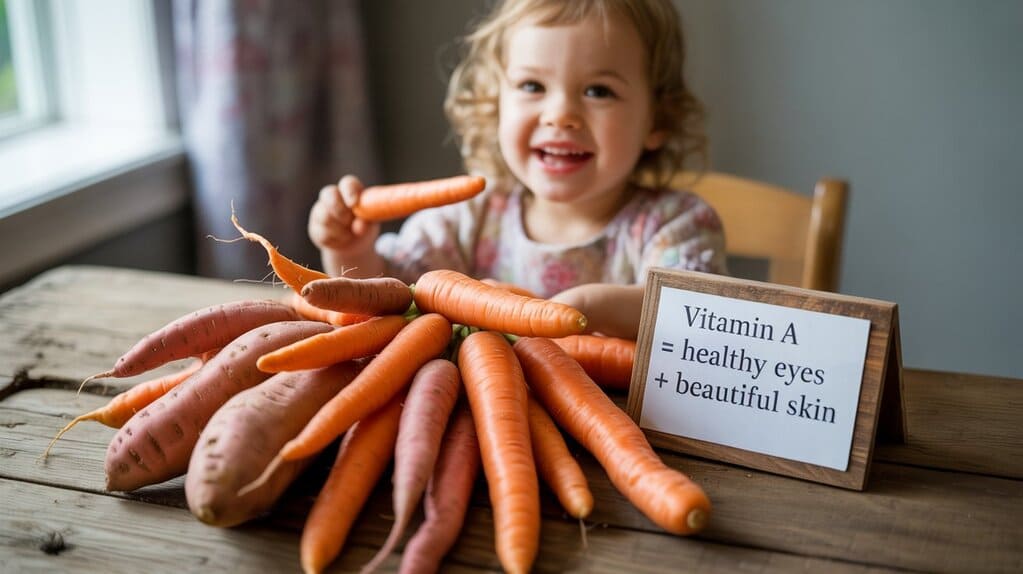
Classroom implementation : menu examples & simple lesson plan
Week-long menu snippets (kid friendly)
- Monday: Carrot and ginger soup + whole-grain roll (drizzle olive oil).
- Wednesday: Baked sweet potato wedges + yogurt dip (bit of olive oil in dip).
- Friday: Grated carrot and apple salad with a nut butter dressing.
Quick lesson (5–10 min)
- Teach students that orange foods help their eyes see better in dim classrooms and protect the skin from sunlight. Show carrot and sweet potato samples; explain how the body turns plant pigments into vitamin A.
Safety and caveats
- Whole foods (carrots, sweet potatoes) are safe and beneficial for most children. Excessive consumption of beta-carotene–rich foods can cause carotenodermia — benign yellowing of the skin — but this is reversible and not dangerous. Wikipédia
- Supplements containing high-dose beta-carotene should be used cautiously. Randomized trials have shown increased lung cancer risk in smokers taking high-dose beta-carotene supplements; therefore, supplements are not a substitute for a varied food-based diet and should be guided by medical advice. PMC+1
Conclusion
Carrots and sweet potatoes are practical, affordable, and delicious classroom allies for promoting healthy skin and vision in children. Their high beta-carotene content supplies provitamin A needed for normal dark adaptation and mucosal health, while carotenoids deposited in skin provide antioxidant and photoprotective benefits. Recent scientific literature across Asia, Europe, and North America supports the role of carotenoid-rich foods in skin protection and in preventing vitamin A deficiency, while also clarifying that for specific age-related eye diseases in older adults, other carotenoids (lutein/zeaxanthin) play a distinct role in supplement regimens. For school nutrition programs, emphasizing whole-food servings of carrots and sweet potatoes (cooked and served with a little healthy fat) is an evidence-based, safe, and child-friendly strategy to support students’ vision, skin health, and overall wellness.
References (selected, authoritative)
- Office of Dietary Supplements (NIH). Vitamin A and Carotenoids — Health Professional Fact Sheet. U.S. National Institutes of Health. (2025). Bureau des Suppléments Alimentaires
- Stanescu C., et al. Skin Aging and Carotenoids: A Systematic Review of Their Protective Roles. Nutrients. (2025). PMC. PMC
- Ma Y., et al. Carotenoids in Skin Photoaging: Unveiling Protective Mechanisms. (2025). PMC. PMC
- Chew EY, et al. The Age-Related Eye Disease Study 2 (AREDS2). JAMA Ophthalmology / NIH PMC (AREDS2 publications and follow-ups). (2012; follow-up analyses through 2022). PMC+1
- StatPearls. Vitamin A Deficiency. (2023). NCBI Bookshelf. CENIBio
- García-Montalvo IA., et al. Food-based approaches and provitamin A carotenoids to improve vitamin A status. (2023). PMC. PMC+1
- USDA / Food composition summaries (summarized in Wikipedia entries for β-Carotene and Vitamin A; nutrient values are commonly used reference points for menu planning). Wikipédia+1





